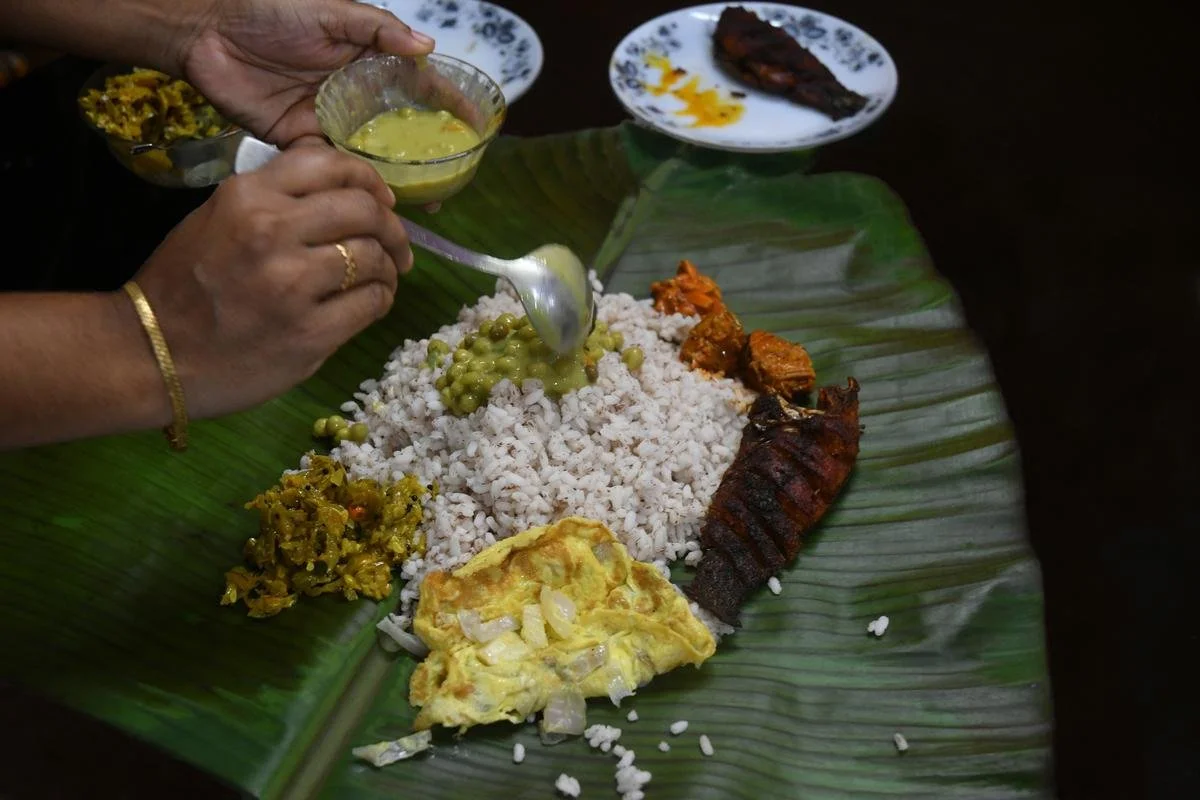Hokh Syun: A Fascinating Kashmiri Tradition of Preservation

Mohsin Mushtaq explores the Kashmiri practice of preserving food in autumn, saved for the Valley’s harsh winters when produce is scarce.
When the alpine valleys of Kashmir are buried under glimmering snowflakes, and its snow-capped peaks are most isolated from the world, the people of Kashmir find solace and warmth in the ancient rituals of kangri (earthen pot), daan (earthen stove), and hamam.
The Kashmir Valley receives heavy snowfall through winter, with temperatures plummeting below minus five degrees Celsius in the uppermost reaches. The Valley often becomes isolated from the rest of the world through these months, and Kashmiris begin to prepare for the winter as early as the autumn months of May and June.
Dehydrated onions in the hokh syun wicker
The hokh syun wicker also contains hog gadde or dried fish.
Preparations begin with gathering coal for kangri, and stitching and sewing woollens for warm clothes. The focal point, invariably, remains food. As autumn arrives, Kashmiris diligently pluck, cut, wash, and sun-dry fresh vegetables on kani-chari (wicker trays). These dried vegetables (and fish) are locally called hokh syun, and are carefully stored to endure the winter, when fresh produce is scarce.
The choice of vegetables is crucial. Emphasis is placed on hardy vegetables capable of enduring the drying process without compromising on flavour or nutritional value. Chosen vegetables include tomatoes, bottle gourds, turnips, and an array of vibrant leafy greens.
Emphasis is placed on vibrant green leafy vegetables like meth or fenugreek.
Hardy vegetables like tomatoes are chosen as they can withstand the drying process without losing flavour.
Preserving hokh syun isn’t a mere process; it is a carefully orchestrated event. The vegetables, intricately cut and seasoned with regional spices like fennel seeds, find their place on expansive rooftops or designated drying areas. Under the crisp summer sky, they undergo a gradual process of desiccation. An enchanting alchemy occurs as the vegetables release their moisture — leafy greens develop a profound earthy flavour, tomatoes acquire a sweet and tangy profile, and bottle gourds are rich and concentrated.
The Hokh Syun wicker comprises primarily of alle hatchi (dried bottle gourd), waangan hatchi (brinjal), sun-dried gogji arre (turnip), nadru (lotus stem), bamchoonth (quince), rwangan hatchi (dried tomatoes), hog gadde (dried fish), palak (spinach) and dried aromatic herbs including praan (shallot), and methi (fenugreek).
Hokh Syun are stored in glass jars and brought out during winter.
Beyond vegetables, even fruit like quince are dried.
Dried shallots or praan, are later used to cook with.
The Valley’s tradition of hokh syun symbolizes the ingenuity of a community that is in harmony with the natural world, and has found a way to extend the abundance of summer into winter. Post-dehydration, these vegetables are sealed in hermetic jars, patiently awaiting their moment in the spotlight during winter feasts. In winter, the culinary magic of hokh syun comes alive in iconic dishes like dum aloo, and nadru yakhni.
Mohsin Mushtaq is a freelance journalist based in Srinagar.
ALSO ON GOYA




















